Rural electrification?
12
12
|
When did rural electrification come to the South Park?
I assume it was earlier around Denver, Morrison and perhaps Platte Canyon, and a bit later up in Jefferson, Como, Alma, etc. But I haven't a clue whether it's 1900's, 1920's or even 1940's. Looks like Kokomo was hooked up by 1941:  Same looks likely for Silica (the visible line follows the road rather than the rails, suggesting it's more likely power than telegraph): 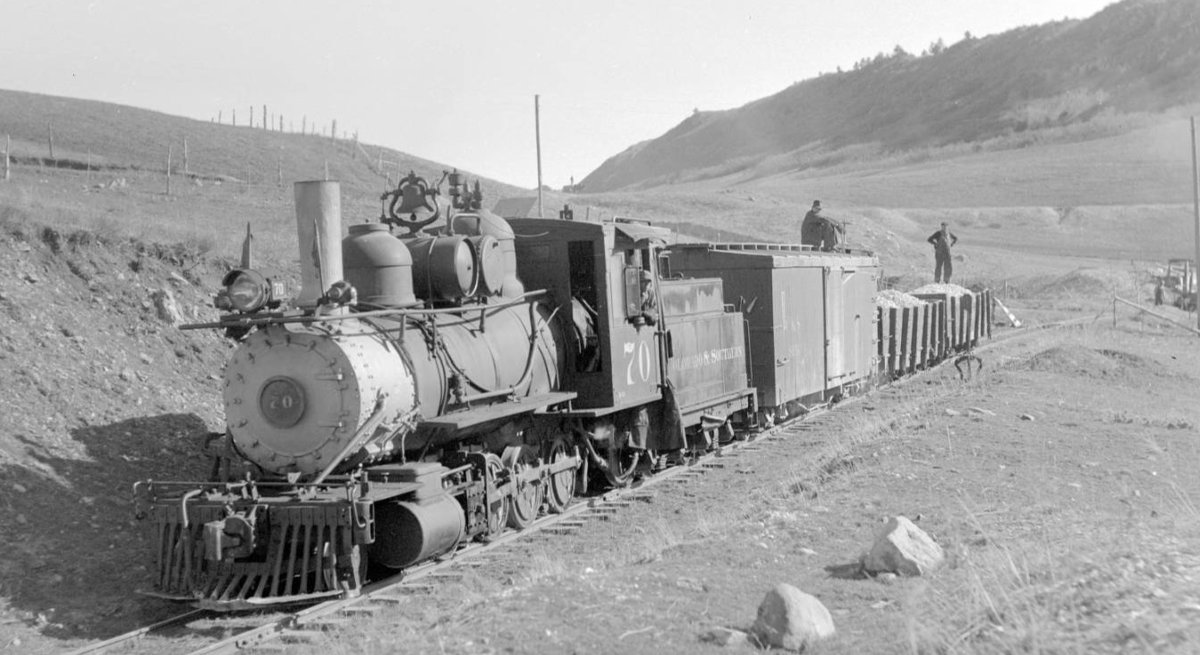 There were a lot of poles in Climax in 1915. All telegraph, or are some of those power?  Thanks, Jeff. |
|
A few more from the Park County Archives:
Alma 1940's: 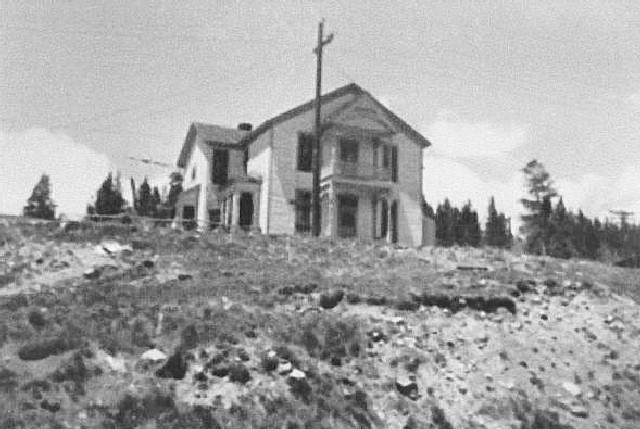 Grant late 1930's:  And this, a "wind charger" in Webster, "... built in 1920s, once had a propeller on top which drove a generator used to charge batteries before electricity came to the area...": 
|
|
In reply to this post by Jeff Young
While not South Park specific check this website for a general history of Colorado electrification.
http://www.coloradocountrylife.coop/this-is-what-grit-looks-like-tough-men-in-hard-places/ Lee Gustafson |
|
In reply to this post by Jeff Young
Looking at DPL photos of 1880s Gunnison there is a varitable forest of what appears to be power poles.
|
|
In reply to this post by Lee Gustafson
Great article, Lee. I was familiar with the early AC efforts in the San Juan mining district, but not the Rural Electrification Agency and its efforts in the 30's.
So, broadly speaking, Colorado mines started getting electricity at the close of the 19th C, towns starting in the mid- to late-teens, and more rural areas in the mid- to late-thirties. My layout is set in 1928. Of the three towns, Kokomo, given its proximity to the Climax mine (in full-swing again since 1924) probably had electricity. Jefferson and Sargent: maybe, maybe not. Silica, Marshall Pass and my ranches: probably not. Cheers, Jeff. |
|
Hmmm. Maybe I spoke too soon.
Ignoring the telegraph pole in the foreground, those wires going to the eaves of the station look like power, not telegraph, don't they? 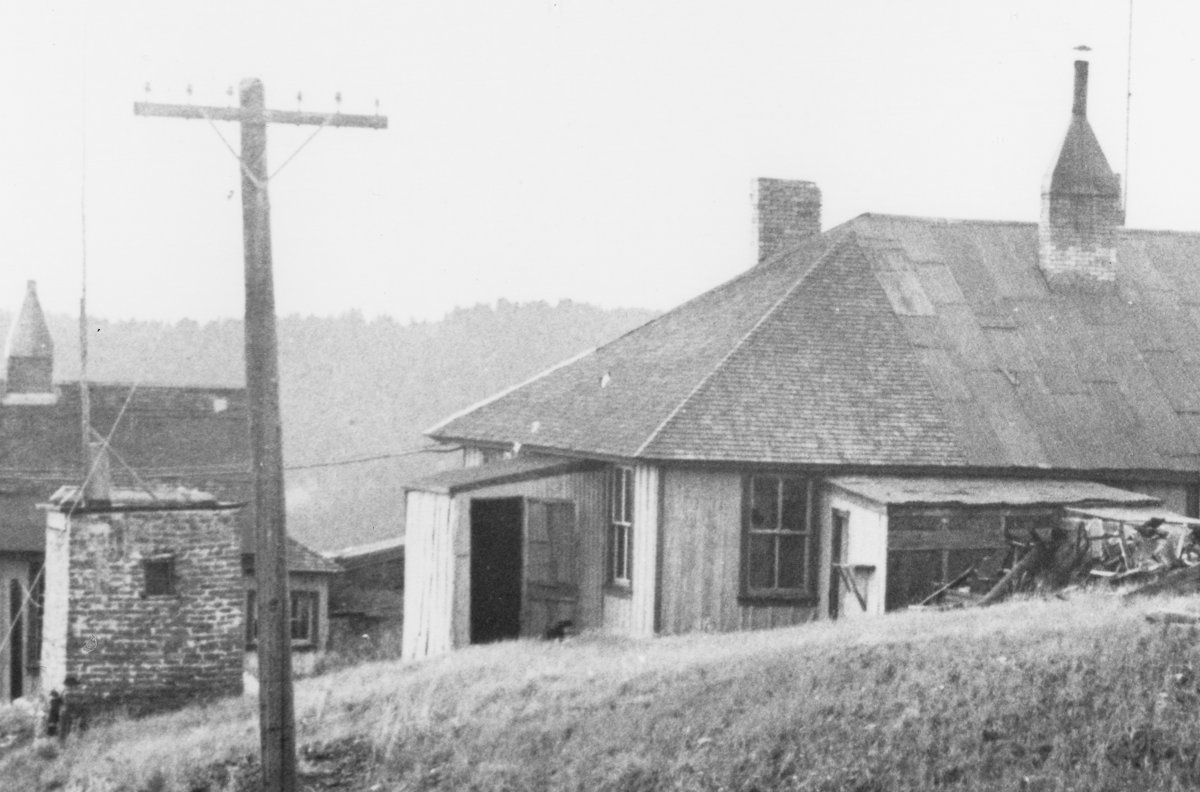 (Marshall Pass, 1926) They had installed a pneumatic motor on the turntable only a few years earlier. Would that suggest a lack of electricity, or might you use pneumatics anyway? 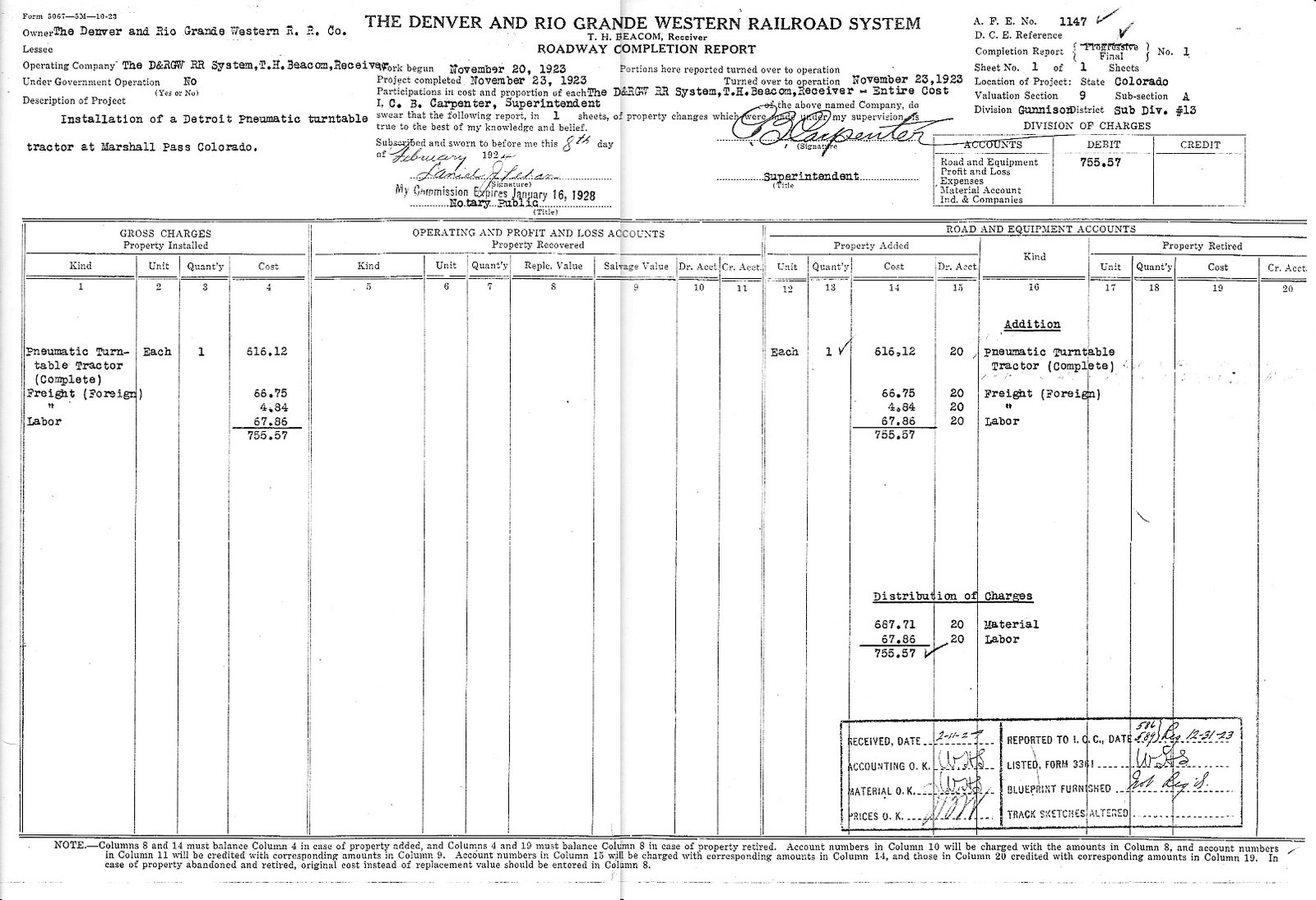
|
|
Jeff,
Don't know whether the power line running up Ten Mile canon was for residential use or just the mine at Climax, but it existed c1910-1915 in the background of the colored views that Roper posted of Curtin: http://coloradosouthern.blogspot.com/2015/09/ropers-snapshot-saturday-no48.html#comment-form 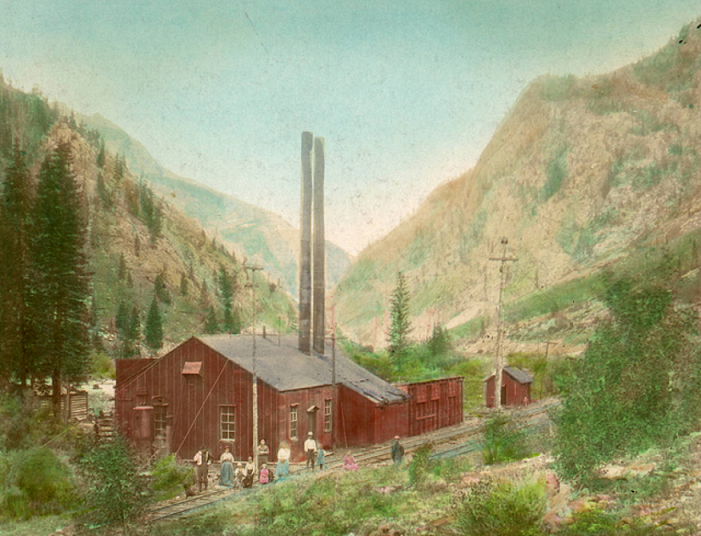 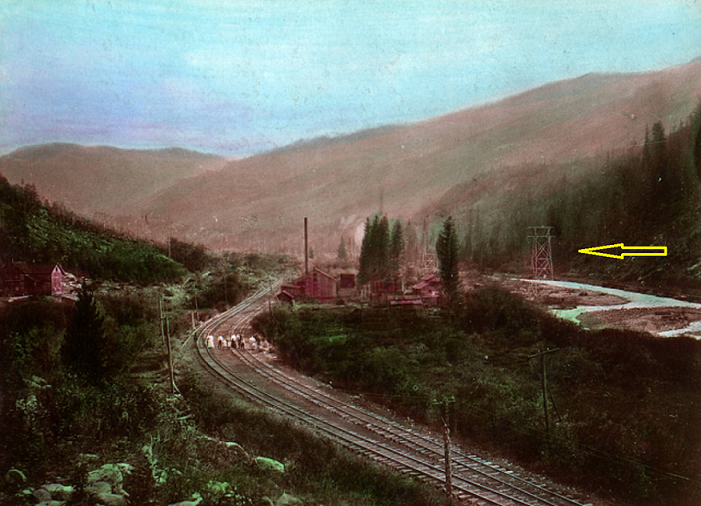 A similar high voltage tower shows up on the hill behind the Kokomo depot, c1924: 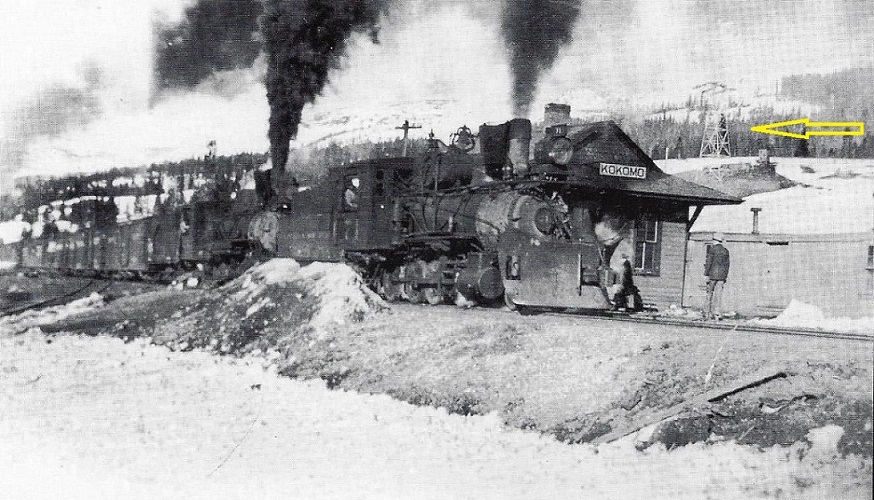 From the Klingers' Highline Memories and Then some . . . I can't tell if the transmission towers are wood or metal. Jim
Jim Courtney
Poulsbo, WA |
|
Jim,
that Powerplant at Curtin was for the Mary Verna Mine adjacent and would have most likely been a DC plant. The transmission towers supply Leadville coming over the Georgetown Hydro plant, Climax not being a heavy user of power until the late Teens early Twenties. I'm sure that the Towers are of Wooden construction at that time period. See http://c-sn3-discussion-forum.41377.n7.nabble.com/Pipes-on-Flats-tp2980p3005.html  http://cdm16079.contentdm.oclc.org/cdm/singleitem/collection/p15330coll22/id/15837/rec/6 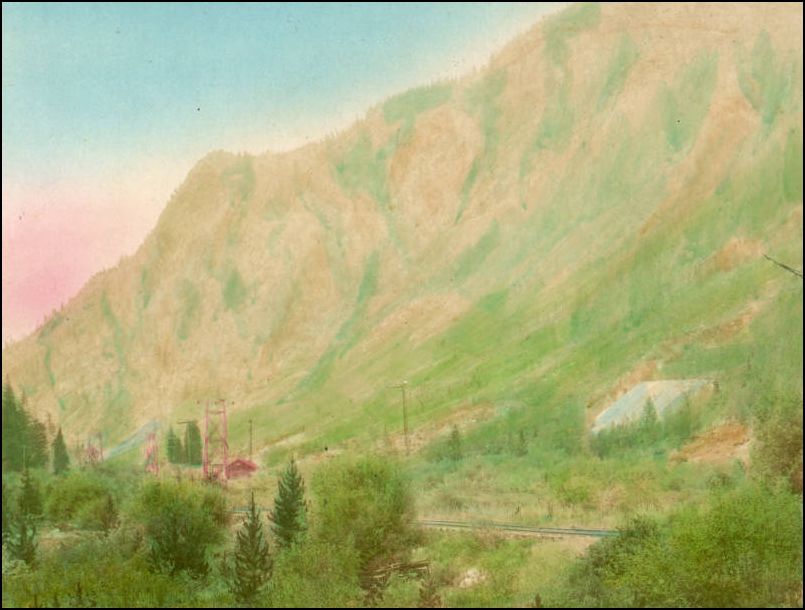 http://cdm16079.contentdm.oclc.org/cdm/fullbrowser/collection/p15330coll22/id/15838/rv/singleitem/rec/5 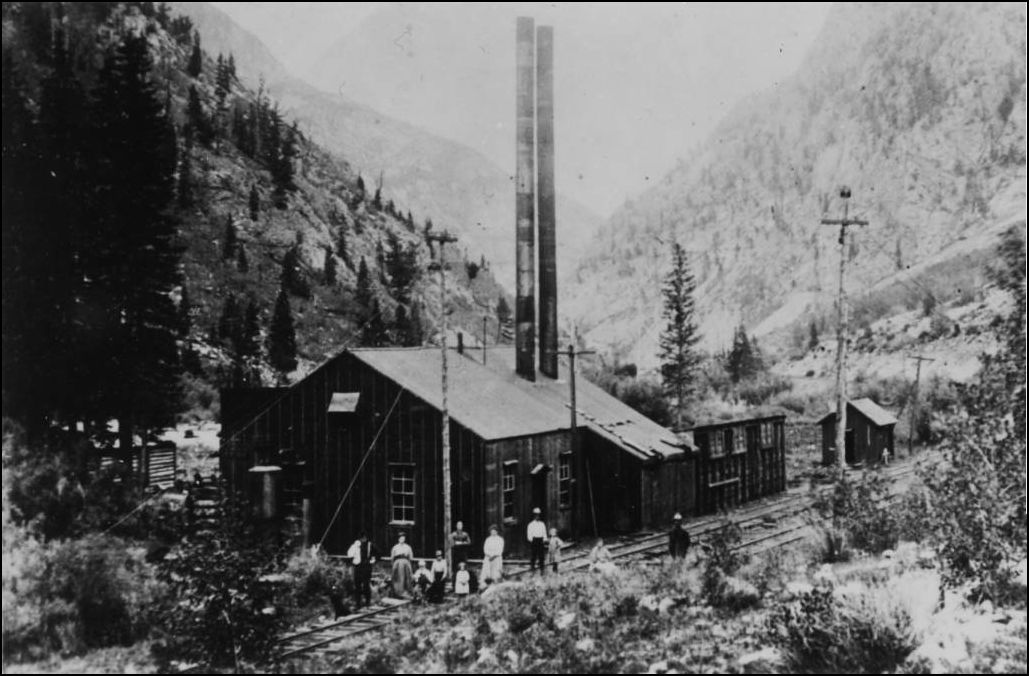 http://cdm16079.contentdm.oclc.org/cdm/fullbrowser/collection/p15330coll22/id/86212/rv/singleitem/rec/2
UpSideDownC
in New Zealand |
|
Administrator
|
In reply to this post by Jeff Young
I asked this question of Doug Schnarbush about Como.
He told me the only electric power in Como at the time of abandonment in 1937 powered two electric light bulbs. One in the Roundhouse boiler room, the other in the foreman's office, both powered from a locomotive dynamo on the roundhouse boiler. |
|
In reply to this post by Chris Walker
Found some newspaper clippings on the power line up Tenmile Canyon:
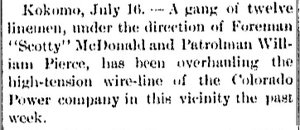 Blue Valley Times July 18, 1914 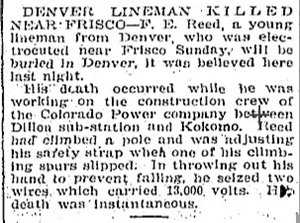 Carbonate Chronicle Dec 24, 1917 And yes, it would appear the line came all the way from Georgetown, via Argentine Pass and Peru Creek (a line that is still in use today):  Summit County Journal June 20, 1913 Getting newspaper info on where the power was being used was more difficult. Of course we know its first use was in the mining industry: 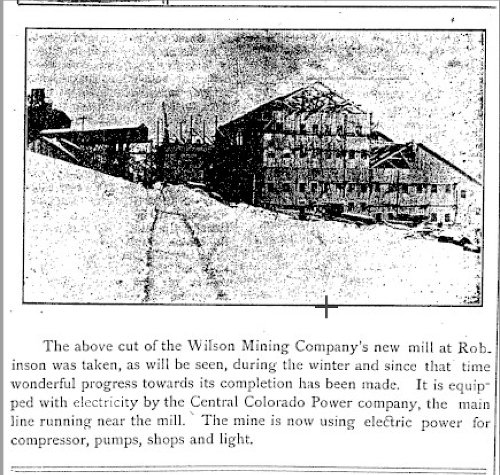 Summit County Journal June 11, 1910 There certainly seems to be some level of residential use:  Summit County Journal May 29, 1915  Summit County Journal July 19, 1919 ... but I couldn't find anything specific to Kokomo. Cheers, Jeff. |
|
In reply to this post by Mike Trent
This would certainly lend some doubt to Jefferson being any more advanced.... Cheers, Jeff. |
|
FYI Jeff,
Como was the last city in Colorado to receive electricity. It got electric around 1960. Rick |
|
> Como was the last city in Colorado to receive electricity. It got electric around 1960.
Wow. That’s worse than here; our house was electrified in 1955. Cheers, Jeff (from dark, damp Ireland) |
|
This post was updated on .
A couple more data-points:
Rifle evidently had power by 1912: 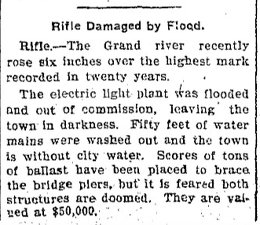 Fairplay Flume, June 14, 1912 Castle Rock got its power plant in 1922:  Fairplay Flume, Dec 8, 1922 And Breckenridge evidently had power by 1916:  Summit County Journal, Jan 8, 1916 |
|
Larry Volmer of Littleton is a retired lineman with a heavy interest in the history of his industry and the region. He would probably be an excellent resource to contact.
My knowledge is more general, in knowing that the private interests of mining companies and related industries brought power generation to the area to serve their specific interests and nothing/little more. So, you would see power, phone, etc. in specific areas that served a company's interests, yet the rest of the area had nothing. General systems that served anyone/everyone in a given area started in the 1880's (phone) and 1890's (power), but were typically small and restricted to a given town. AM TEL initiated their Long Lines system in 1888, kicking off the first town-to-town lines that would come to be known as "toll" lines and the long distance system. But it was a long time in coming for backwater places to get phone and power. When I was a kid, I remember seeing many old lines built by "farmers" that ran into town to connect with "the system". The REA was a big part of FDR's effort to fight The Depression and help improve America's infrastructure at the same time. We tend to think that the utility systems we have today were always there and on every street. The whole industry (both coms and power) began as something of a novelty and snowballed with time to become commonplace. For some of us old duffers, we saw or knew of plenty of places with no indoor plumbing or power or phone. Explain that to a kid whose celfone is an actual body part (or so they think !)
"Duty above all else except Honor"
|
|
Some places in Denver had electric lighting as early as 1881.Denver Union Station had it that early both inside,and outside on the tower where they had mounted a Brush carbon arc lamp system.Several photos taken of the depot taken in the 80s show the Brush lights.Beside the depot there were light towers in some residential areas-looking somewhat like the floodlighting on modern freeways.They were a stop-gap measure until more reliable electric street lamp systems could be developed.Alex Martin took a photo of one of these towers in 1883-DPL photo X-23753.By the mid 90s the towers had been replaced and dismantled
|
|
Checking out DPL map reference CG4314 .04 1882 F55 one of the Arc light towers wasn't more than 5-6 blocks from the original DSP&P Roundhouse.
|
|
IREA supply power to most of South Park and to Como and Jefferson. But not until after the Railroad Era. The Hotel in Como had electricity in the early 40's, have not researched the exact date. Certainly in Cooley's time in Como, he left in 46.
|
|
Was there a standard distance between telegraph poles and power poles? With regard to telegraph poles did the railroad have any standard distances they tried to maintain?
Lee Gustafson |
|
In reply to this post by ComoDepot
Hi David,
Good to see you on here. I model 1928, so it looks like I'll leave power out of the South Park. While I've still found nothing definitive on Kokomo, there were certainly more power stations and lines in the vicinity, so I might give Kokomo power just for a bit more variety. Cheers, Jeff. |
«
Return to C&Sng Discussion Forum
|
1 view|%1 views
| Free forum by Nabble | Edit this page |

